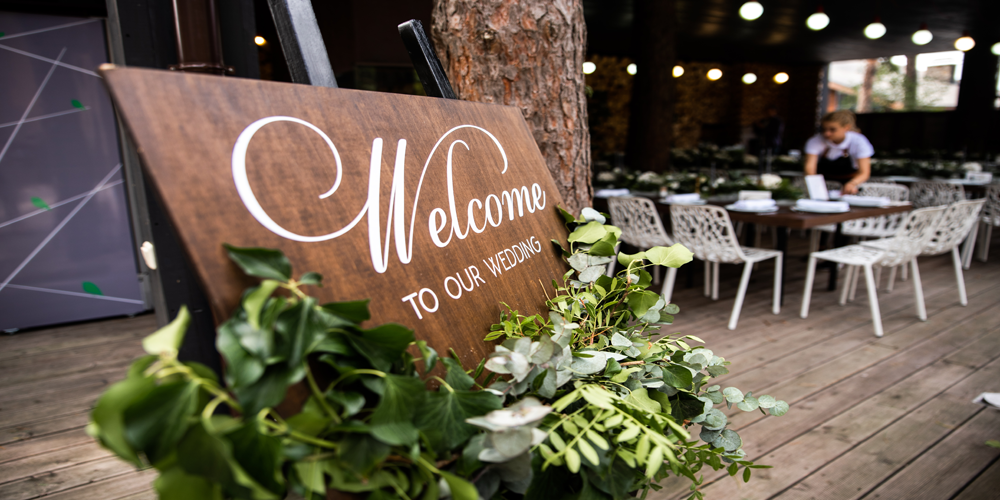Navigating Wedding Reception Planning
Understanding the scope of your wedding begins with determining the guest count. It’s a delicate balance between your dream day and practical considerations such as budget and venue capacity. Begin by drafting an initial list, which can be refined to fit within your constraints. Consider the must-invite guests first – close family and friends – before expanding to colleagues and acquaintances.
Managing Plus-Ones and Children
Deciding on plus-ones and children can significantly impact your guest count. Establish clear guidelines for who is allowed a plus-one. Typically, extending this courtesy to those in long-term relationships or married couples is considerate. As for children, decide whether you want an adults-only event or if you will provide childcare options at the venue. Communicate your decisions clearly on the invitations to avoid confusion.
Balancing Family, Friends, and Professional Connections
Striking a balance among family, friends, and professional connections ensures all significant aspects of your life are represented. Start by allocating a percentage of your guest list to each group. This method helps maintain equilibrium and prevents feelings of exclusion. Engage both families early in the planning process to mitigate potential conflicts and ensure everyone’s expectations are met.
- Draft an initial guest list and refine it based on capacity and budget.
- Establish clear guidelines for plus-ones and children’s attendance.
- Allocate portions of the guest list to family, friends, and professional contacts.
Citing sources for more detailed guides can help in further refining these steps. For example, Source: Example Website. “`
Selecting the Perfect Venue
Considering Indoor vs. Outdoor Settings
When choosing between an indoor or outdoor setting, consider both the aesthetic and practical aspects. Indoor venues offer controlled environments, making them ideal for unpredictable weather. They also provide a blank canvas to customize with decorations and lighting. Conversely, outdoor venues bring natural beauty and ambiance, perfect for couples wanting a nature-inspired setting. However, always have a contingency plan for inclement weather, such as renting tents or marquees.
Evaluating Venue Amenities and Capacity
The amenities and capacity of a venue are critical factors in your decision. Ensure the venue can comfortably accommodate your guest list while providing essential amenities such as restrooms, catering facilities, and parking. Some venues offer additional perks like on-site coordinators, AV equipment, and décor packages. Evaluate whether these extras align with your needs and budget.
Exploring UK Venues for an Overseas Wedding
For those dreaming of a destination wedding in the UK, numerous stunning options exist. From historic castles to charming countryside estates, the UK offers a variety of breathtaking venues. Consider the logistics of an overseas wedding, including travel arrangements for guests and legal requirements for marriage in a foreign country. Research venues that specialize in hosting international weddings to ensure they can assist with these details. “`
Curating a Memorable Menu
Accommodating Dietary Restrictions and Preferences
When designing your wedding menu, it’s crucial to consider the diverse dietary needs of your guests. Begin by gathering information on any food allergies, intolerances, or specific preferences through your RSVPs. This proactive approach ensures everyone feels included and catered to.
- Offer vegetarian, vegan, gluten-free, and dairy-free options.
- Consult with your caterer to create adaptable dishes.
- Clearly label menu items to avoid any confusion.
Incorporating Cultural or Regional Cuisine
Infusing cultural or regional elements into your menu can make your wedding feast memorable. Reflecting your heritage or the local cuisine of your venue adds a personal touch and introduces guests to new flavors.
- Choose dishes that hold sentimental value or are traditional in your culture.
- Highlight local produce and specialties if hosting a destination wedding.
- Work with chefs who specialize in specific cuisines to ensure authenticity.
Designing a Cohesive Menu with Multiple Courses
A well-structured menu enhances the dining experience. Aim for a balanced progression of courses, ensuring variety while maintaining harmony in flavors and presentation.
- Appetizers: Light and enticing starters set the tone for the meal.
- Main Courses: Offer a choice of meat, fish, and vegetarian dishes.
- Desserts: Conclude with a selection of sweet treats.
Coordinate with your caterer to pair each course with suitable beverages, enhancing the overall culinary journey for your guests.
Transportation and Logistics
Arranging Transportation for Guests
Ensuring seamless transportation for your guests is crucial for a smooth wedding experience. Start by identifying the most common travel routes and modes of transport to the venue. Consider arranging shuttle services from key locations such as airports, train stations, and hotels. This not only simplifies logistics but also ensures guests arrive on time and comfortably. For those driving, providing clear directions and parking information is essential.
Coordinating Arrivals and Departures
Effective coordination of guest arrivals and departures can prevent confusion and delays. Create a detailed schedule, taking into account different arrival times and methods of travel. Communicate this schedule clearly with your guests, whether through a wedding website, invitations, or a dedicated communication channel. Collaborate with your transport providers to ensure they have up-to-date information and contingency plans in place.
Providing Accommodation Information for Out-of-town Guests
For guests traveling from afar, offering accommodation options is a thoughtful gesture. Research nearby hotels that cater to different budgets and preferences. Reserve a block of rooms at a discounted rate if possible, and share this information along with booking instructions well in advance. Additionally, consider providing details about local attractions and amenities to help guests make the most of their stay. “`
Enchanting Entertainment
Selecting Live Music or a DJ
Choosing between live music and a DJ can set the tone for your wedding reception. Live bands bring an energetic atmosphere, often engaging guests with dynamic performances. On the other hand, DJs offer versatility, with extensive playlists that cater to diverse musical tastes. Consider your venue’s acoustics and space when making this decision. For smaller, intimate settings, a DJ might be preferable, while larger venues can benefit from the grandeur of a live band.
Unique and Interactive Elements
To make your wedding entertainment stand out, incorporate unique or interactive elements. Photo booths with fun props not only provide entertainment but also create lasting memories for guests. Live performers such as magicians, caricature artists, or even fire dancers can captivate your audience and turn your reception into an unforgettable experience.
Planning Engaging Activities for Guests
Engage your guests with thoughtfully planned activities throughout the event. Lawn games like cornhole or giant Jenga can be great for outdoor receptions. For indoor gatherings, consider trivia games or a dance-off to keep energy levels high. These activities encourage mingling and ensure everyone has a memorable time.
- Live bands for energetic performances
- DJs for versatile music selections
- Photo booths with props
- Live performers (magicians, caricature artists, fire dancers)
- Lawn games (cornhole, giant Jenga)
- Trivia games or dance-offs
Romantic Touches and Decor
Personalised Elements
Infusing your wedding with personalized elements can make the event truly unique. Consider incorporating monogrammed napkins, custom signage, or even a photo wall featuring memories from your relationship. Such touches create a sense of intimacy and connection among your guests.
Cohesive Theme or Color Scheme
Creating a cohesive theme or color scheme is essential for a visually appealing wedding. Select a palette that reflects your personalities and story. Whether it’s a rustic chic theme with earthy tones or an elegant affair with shades of gold and ivory, ensure all decor elements align with this vision. This consistency will provide a seamless aesthetic throughout the venue.
Special Touches for an Intimate Atmosphere
Adding special touches can enhance the intimate atmosphere of your wedding. Think about using soft lighting, such as fairy lights or candles, to create a warm glow. Additionally, consider placing handwritten notes at each table setting to thank your guests personally for attending. These small gestures can leave a lasting impression and foster a heartfelt ambiance.
The Toast and Speeches
Selecting Speakers and Coordinating Speeches
Choosing the right speakers for your wedding toasts and speeches is crucial. Typically, the best man, maid of honor, and parents of the couple are selected for this role. It’s essential to coordinate with each speaker to ensure they are prepared and comfortable. Provide them with a general timeline and any specific points you would like covered.
Incorporating Meaningful Anecdotes and Sentiments
Speeches should be heartfelt and personal. Encourage your speakers to share meaningful anecdotes that highlight your relationship’s journey. Sentiments of love, joy, and support will resonate well with guests. Remind speakers to keep their messages positive and uplifting, avoiding any potentially embarrassing or sensitive topics.
Ensuring Appropriate Timing and Flow
Timing is everything when it comes to speeches. Aim for each speech to be between three to five minutes long to maintain engagement without dragging on. Coordinate the order of speakers to ensure a smooth flow; for example, start with the best man or maid of honour, followed by parents, and conclude










